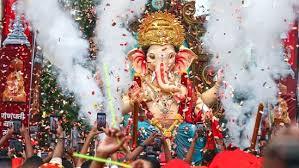Ganesh Chaturthi: Celebrating the Birth of the Elephant-Headed Deity
Ganesh Chaturthi, also known as Vinayaka Chaturthi, is one of the most widely celebrated Hindu festivals in India. This vibrant festival marks the birth of Lord Ganesha, the beloved elephant-headed god of wisdom, prosperity, and good fortune. Celebrated with immense fervor and devotion, Ganesh Chaturthi brings communities together in joyous celebration.
Origins and Significance
The festival begins on the fourth day of the Hindu month of Bhadrapada, which usually falls in August or September. According to Hindu mythology, Lord Ganesha was created by Goddess Parvati from sandalwood paste and brought to life to guard her while she bathed. When Lord Shiva, Parvati’s husband, returned and found Ganesha blocking his way, he beheaded him in a fit of rage. Upon realizing his mistake, Shiva replaced Ganesha’s head with that of an elephant, thus giving him his distinctive appearance.
Rituals and Celebrations
Ganesh Chaturthi is celebrated over a period of 10 days, with the festivities reaching their peak on the final day, known as Anant Chaturdashi. The celebrations begin with the installation of beautifully crafted idols of Lord Ganesha in homes and public pandals (temporary stages). These idols are often made from clay and are intricately decorated.
Devotees perform various rituals, including the chanting of Vedic hymns and prayers, and the offering of sweets, flowers, and fruits to the deity. Modak, a sweet dumpling believed to be Ganesha’s favorite, is a special treat prepared during this festival. Cultural events, including music, dance, and theatrical performances, are also organized, adding to the festive atmosphere.
Environmental Concerns and Eco-Friendly Practices
In recent years, there has been a growing awareness of the environmental impact of Ganesh Chaturthi celebrations, particularly the immersion of idols made from non-biodegradable materials in water bodies. To address these concerns, many communities have started adopting eco-friendly practices, such as using clay idols and natural colors, and promoting the use of artificial tanks for idol immersion.
Conclusion
Ganesh Chaturthi is more than just a religious festival; it is a time for family, community bonding, and cultural expression. The festival’s rich traditions and vibrant celebrations reflect the deep-rooted devotion and cultural heritage of the people. As the festival continues to evolve, the emphasis on eco-friendly practices ensures that the celebrations remain sustainable and respectful of the environment.

